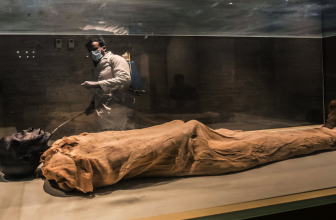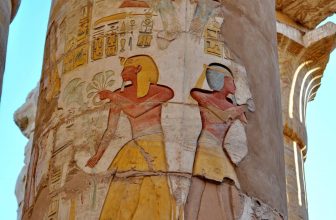The National Museum of Alexandria, originally a palace, functioned as a gathering place for Alexandria’s royalty and merchant class hierarchy. The museum is divided into three levels: the basement houses Pharaonic artifacts, the ground floor houses Graeco-Roman treasures, and the first floor houses relics from Egypt’s Coptic Christian and Islamic heritage, as well as some insight into the valuables left behind by King Farouk’s family prior to the 1952 revolution.
History of the Museum
The structure is an Italian-style palace erected in 1928; and It is clearly recognized as being built in 1928 by Assad Basili Pasha, a wealthy businessman. There are currently 1800 items in the collection. All of the precious items are narrators of Alexandria’s rich history, opening chapters relating to the Pharaonic, Roman, Coptic, and Islamic periods. The Alexandria National Museum has four large levels with a total size of 3,480 square meters. It is designed in the manner of an Italian mansion.
A lovely landscape with shaded trees and floral plants surrounds the museum. Its newly painted white exterior, with semi-circular double stairs leading to an attractive entryway, is easily visible from the street. The Alexandria National Museum is no different. A subterranean hall has been converted into an audio-visual studio where visitors may tour the museum using computer programs that display each object from various viewpoints.
Every available area, including the grounds, has been utilized; the former garage for the American Consulate employees has been turned into a lecture hall and an open-air theatre for nighttime concerts. Indeed, the grounds have previously hosted one of the American University in Cairo Press’s Book and Author receptions. The Alexandria National Museum’s construction began in 1926 and was formally inaugurated by Egypt’s President on December 31, 2003.
Alexandria National Museum Design
The Alexandria National Museum has four large levels with a total size of 3,480 square meters. It is designed in the manner of an Italian mansion. A lovely landscape with shaded trees and floral plants surrounds the museum. The National Museum, which was originally a palace, functioned as a gathering place for Alexandria’s royalty and merchant class hierarchy. Even former Egyptian Prime Ministers have paid a visit to the location.
There are currently 1800 items at the Alexandria National Museum. All of the precious items are narrators of Alexandria’s rich history, opening chapters relating to the Pharaonic, Roman, Coptic, and Islamic periods. A statue of the Roman emperor Hadrian, a female Pharaoh of Egypt, a collection of 162 gold and silver coins struck in Alexandria, and other artifacts linked to ceremonial sacrifices, utensils, and costly jewelry are among the significant exhibits of the Alexandria National Museum.
Mummies are also displayed to the general public, but only in secret underground rooms. Other exhibits unearthed during the underwater excavations are also on show in the halls of the Alexandria National Museum among the other Greco-Roman artifacts. In the displays’ presentation approaches, new ways have been implemented. The National Museum has been updated with new lighting systems, fire alarms, and audiovisual equipment to provide appropriate illumination of the artifacts.
The Alexandria National Museum is a state-of-the-art museum housed in a 20th-century palace in central Alexandria. Objects from various eras are presented in unusual hanging displays. It would have been a simple thing to strip the interior of the palace and re-design it to allow galleries suited for the display of beautiful items, and the portion of the book about the creation of Alexandria is fitting and intriguing.
The items on sale are displayed in diagonally arranged cabinets that do not detract from the building’s exquisite architectural characteristics. When you realize that many of the rooms in the palace were small and that 1,800 works of art were to be displayed in a limited space while yet allowing guests to pass freely via tight doors, the immensity of the undertaking becomes clear.
The rooms through which the cabinets travel are also well-lit, and a single object or group of artifacts, as well as authentic historical plaques, have been put in to enrich the interior design. This museum allows visitors to compare and contrast religious cultures. Icons of Jesus, the Virgin Mary, and the Last Supper, as well as tombstones and garments adorned with golden and silver crosses, are among the Coptic pieces, while a collection of 162 gold and silver coins made in Alexandria is among the Islamic goods.
A collection of beautiful jewelry, bejeweled gold and silver prizes, watches, crystal glasses, and vases, as well as gold-plated purses, rings, necklaces, and bracelets, reveals Egypt’s previous royal family’s extravagance. Remember that everything is placed in suspended cabinets so that everyone may see it. They’re meant to pique people’s interest in culture and maintain historical continuity. Today, no contemporary museum is complete without a high-tech antiquities restoration laboratory and an electronic security system to protect them; let us put the Alexandria National Museum, a cultural beacon, at the top of the list.














